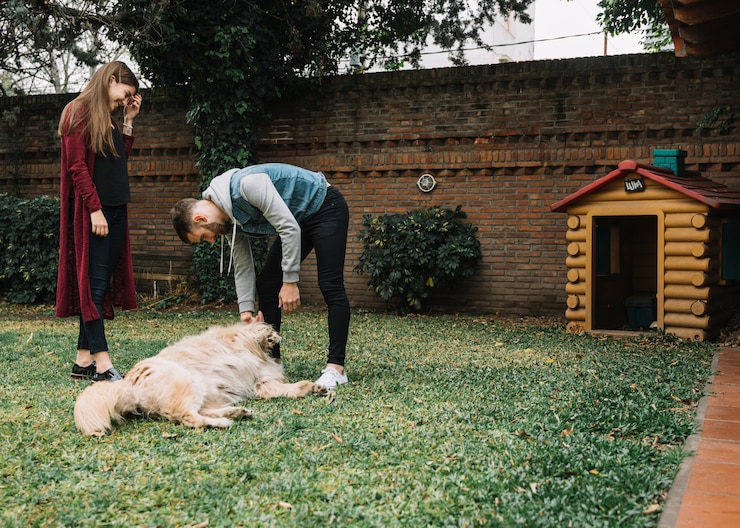Many pet owners are emotionally compelled to bury their beloved dog in the backyard, where memories were created and unwavering love was experienced, when the pet dies. Professor Rachel Allavena, a veterinary pathologist, says that this noble deed can have unexpectedly complicated legal and environmental ramifications, especially when euthanasia is involved.
In order to humanely put animals to sleep, veterinarians administer an overdose of anaesthetic, which can leave the pet’s system poisonous for years. These residues have the potential to be fatal if ingested by pets or scavenging wildlife. Rare but documented instances of domestic dogs and raptors becoming poisoned after consuming or excavating euthanized remains have been reported. If backyard burial is still the preferred option, these compounds, which are incredibly resilient in tissues, need to be carefully contained.
| Topic | Information |
|---|---|
| Burial Depth | Minimum 3 feet below surface with 2 feet of dirt on top |
| Time Limit for Burial | Within 24–48 hours after death |
| Container Type | Biodegradable containers like wood or eco-friendly pods |
| Burial Restrictions | No public land, rental properties, parks, or water-adjacent sites |
| Poison Risks | Euthanasia drugs may remain active in tissues for years |
| Legal Issues | Some landlords have demanded hazardous waste removal |
| Cremation Option | Can be arranged through private companies, often returnable ashes |
| Scientific Donation | Pet body can be donated to veterinary schools for disease research |
| Website Reference |
According to Professor Allavena, the pet should ideally be buried in a wooden or biodegradable box, and the grave should be at least one meter deep. This serves as a physical barrier in addition to a symbolic coffin, greatly limiting scavengers’ access. However, she points out that finding boxes that fit larger pets can be logistically difficult, particularly when feelings are already running high.
Notably, the depth of grief experienced after losing a pet can resemble that of losing a loved one in real life. Oprah Winfrey and Miley Cyrus are two celebrities who have openly discussed their intense emotional reactions to losing their dogs. These times spent together highlight a larger cultural change: pets are now more often seen as family than property. The choices we make about how to honor them take on new significance as this societal perspective changes.
Local council laws vary from state to state in Australia and many U.S. states. In certain situations, burials on private property are entirely permitted under certain restrictions. However, it is strictly prohibited on rental properties and in public areas like parks. Professor Allavena cited instances in which landlords sued tenants for hazardous waste violations in addition to unlawful burial. Concerns about liability as well as compassion have led some municipalities to review their bylaws in response to these lawsuits.
Some owners choose to donate to science in search of meaning and closure. Pet cadavers are commonly accepted by veterinary schools, particularly those of dogs that died of cancers that resemble human cancers. Both human and animal oncology frequently benefit from the research generated by these donations. The attending veterinarian manages the logistics and paperwork for the procedure. If requested, the cremated remains are given to the families in exchange. It turns into a “meaningful legacy,” as Allavena describes it, one that respects the relationship by giving a gift of knowledge.
There are basic dos and don’ts, though, if burial is desired. Avoid burying too close to the surface—never more than three feet—and stay away from water sources. Make sure to pick a location that won’t be impacted by construction in the future. Additionally, unless specifically authorized, avoid burying pets in someone else’s property. Legally speaking, this could be regarded as unlawful dumping. Furthermore, in most places, it is illegal to bury livestock or poultry on residential property due to separate regulations.
Private households are not the only ones affected by this issue. Ricky Gervais recently narrated a documentary that examined how animals, both domestic and wild, are handled after they die and how cultural ethical standards differ. Whether contemporary urban planning actually meets the emotional needs of bereaved pet owners was questioned in the backyard burial segment. Backyard space is decreasing as cities get denser, and alternatives like bio-urn memorial trees or communal pet cemeteries are becoming more popular.
These substitutes are in line with the increasing awareness of environmental issues. Pets can join a regenerative ecosystem by using biodegradable pods that eventually sprout into trees. Celebrities and wellness influencers who care about the environment have endorsed this approach, increasing its visibility. It appeals to a new generation of pet owners who are concerned with sustainability and ritual, even though it is less conventional than backyard burial.
Curiously, cremated pet remains can be interred with their owners in certain U.S. states, but not in nearby plots in human cemeteries. Older pet owners who desire a shared resting place that symbolically ends a lifetime bond have taken a particular interest in this. It signifies a blurring of the lines between caring for humans and animals, giving relationships that society once considered secondary dignity and permanence.
It’s also important to recognize the noticeable emotional impact. It is a potent ritual to dig a grave, carefully place a pet there, and say goodbye in one’s own place. Rules must be followed, but they should also be explained empathetically. When the property was later sold, a family in Brisbane who had buried their dog under a beloved tree was fined. After finding the grave, the new owner lodged a complaint. Public discussion about the proper handling of such cases was sparked by the conflict between the emotional impact of the original act and the legal strictness of property transfer.
This discussion is philosophical as well as legal. When does possessing land take precedence over expressing emotions? Must private rituals give way to safety and regulation, or should they be preserved? These queries highlight a larger conflict in modern society between individual choice and regulation, especially in relation to death and memorialization.

